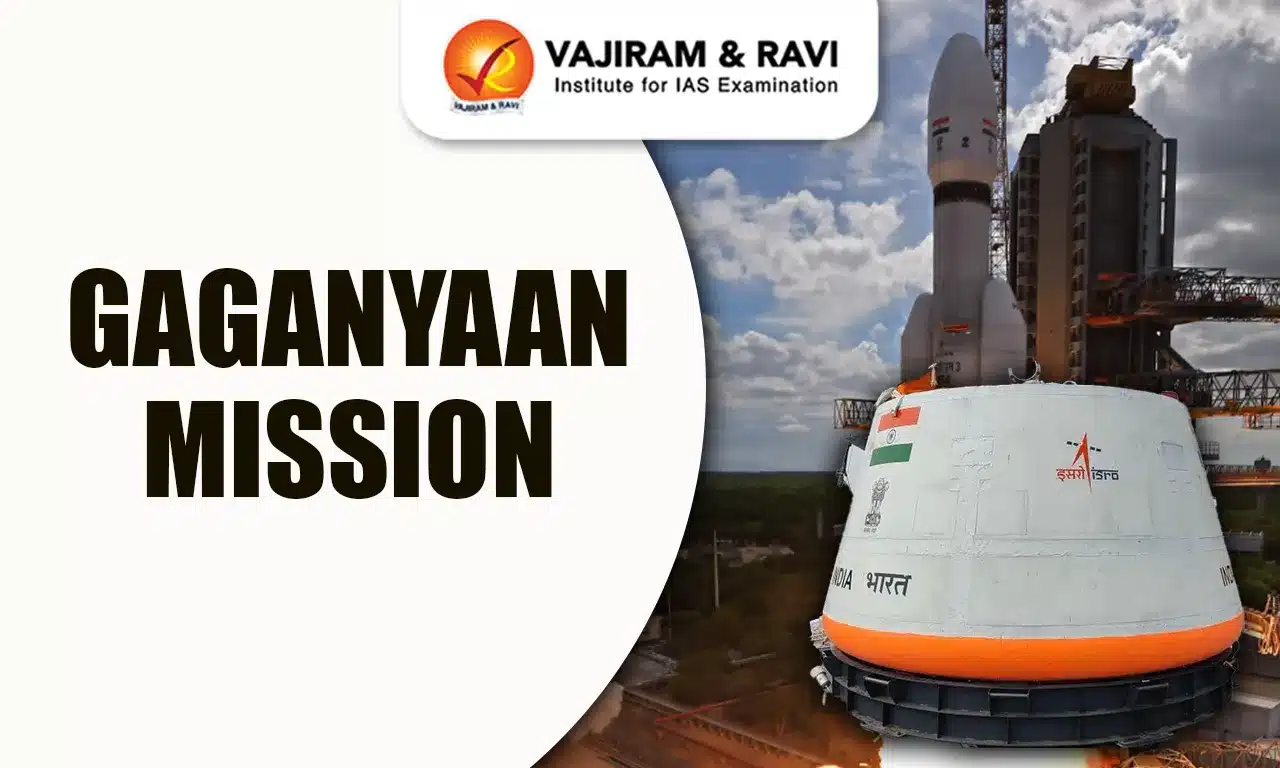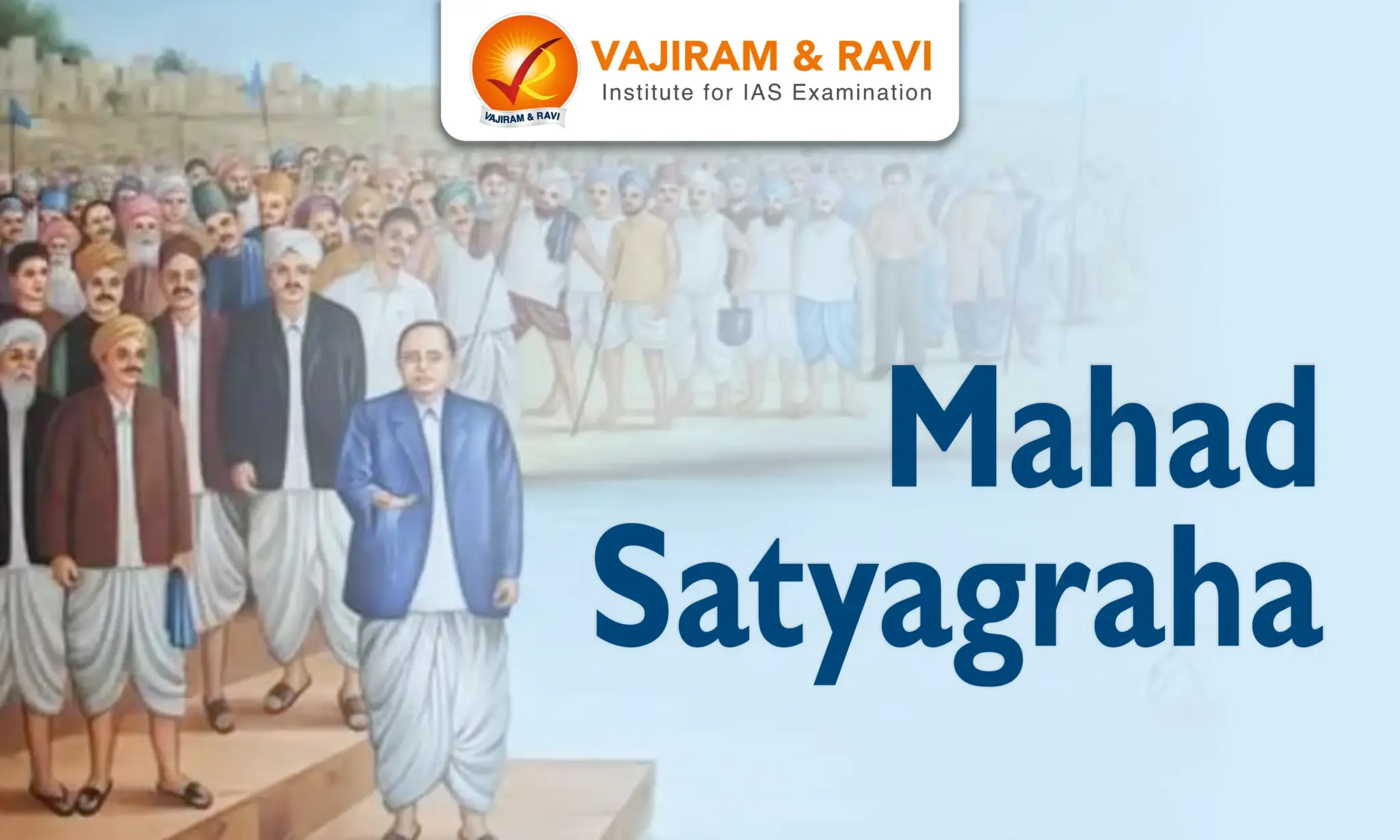The Gaganyaan Mission is India’s ongoing project to send a 3-day manned mission to the Low Earth Orbit (LEO) of 400 km with a crew of 3 members and bring them safely back to Earth.
As part of this program, two unmanned missions and one manned mission are approved by the Government of India.
The first manned spaceflight is expected to take place before 2026. The success of the Gaganyaan Mission will put India in the elite group of nations (US, Russia, and China) having human space flight capability.
Gaganyaan Mission Objectives
The Gaganyaan Mission is an ambitious and co-ordinated project of ISRO in collaboration with other agencies, such as various research labs, Indian academia, and industries, with the following objectives:
- To undertake human space flights: Its immediate aim is to demonstrate indigenous capability to undertake human space flights.
- Space exploration: In the long run, it will lay the foundation for a sustained Indian human space exploration programme.
- Conduct Experiments: As part of the mission, Gaganyaan also encourages and supports micro-gravity experiments.
Technologies Required for ISRO’s Gaganyaan Mission
In order to ensure crew safety in this programme, various precautionary and safety measures were required. In this regard, ISRO required major new technologies for the Gaganyaan Mission such as Human rated launch vehicle, a habitable orbital module, crew escape systems, and a life support system.
Human-Rated LVM3
A modified version of ISRO’s most-reliable rocket, LVM3 (previously called Geosynchronous Satellite Launch Vehicle Mk III), is the launching vehicle of the Gaganyaan Mission.
- It is re-configured as a human rated launch vehicle to be capable of safely transporting humans into the intended orbit.
- It has a three stage propulsion system - solid stage, liquid stage, and cryogenic stage.
- It consists of Crew Escape System (CES) as well as Orbital Module, along with solid stage, liquid stage, and cryogenic stage.
Orbital Module (OM)
It will be orbiting Earth, comprising the Crew Module (CM) and Service Module (SM). The Orbital Module is equipped with state-of-the-art avionics systems with adequate redundancy.
- Crew Module (CM):
- It is a habitable space with an Earth like environment for the onboard crew members. It will consist of a human habitable module with a control system for the mission, crew communication, navigation, guidance, and avionics system.
- Structure of CM: It has a double-walled rigid construction consisting of a pressurized metallic inner structure and an unpressurized external structure with a Thermal Protection System (TPS).
- It houses human centric products, life support systems, avionics, crew interfaces, and deceleration systems.
- This module has also been designed for re-entry facility to earth atmosphere ensuring safety of the crew during descent till touchdown.
- Service Module (SM):
- It will be used for providing necessary support to the Crew Module while in orbit.
- It is an unpressurized structure containing the propulsion system, thermal system, power systems, avionics systems and deployment mechanisms.
Crew Escape System
To ensure theAstronauts' safety, various In-flight Abort Demonstrations of Crew Escape System (CES) have been included.
- Flight Test Vehicle Abort Mission-1 (TV-D1):
- It is the first of the two abort missions to test the safety mechanisms and demonstrates the performance of the Crew Escape System of the Gaganyaan Mission.
- This has also confirmed the functioning of systems for separating the crew module from the rocket in case of a mid-flight emergency (abort and escape mission of the astronauts).
- Hence, it will allow the Gaganyaan crew to leave the spacecraft in an emergency.
Life Support System
- Life Support System to provide an earth like environment to crew in space, crew emergency escape provision and evolving crew management aspects for training, recovery and rehabilitation of crew members.
Training Programmes for Gaganyaan Mission Crew Members
- Astronaut Training Facility established in Bengaluru caters to Classroom training, Physical Fitness training, Simulator training and Flight suit training.
- Training modules cover Micro-gravity familiarization through Parabolic Flights, Aero-medical training, Recovery & Survival training, Crew Training Simulators, Aero medical training, etc.
Different Phases of Gaganyaan Mission
ISRO plans to execute two unmanned missions as part of the Gaganyaan mission projects before the final manned mission due to safety concerns of the project.
- Testing phase: Before executing the unmanned and manned mission, ISRO has planned to demonstrate numerous tests including the following ones:
- Integrated Air Drop Test (IADT): This Test is intended to validate the deceleration system (parachute and pyro's) performance using an IAF chopper
- Pad Abort Test (PAT): The test will involve dropping the crew module from a helicopter and will help understand the impact from various heights and velocity.
- Test Vehicle (TV) flights: The Test Vehicle is a single-stage liquid rocket developed for this abort mission.
- Unmanned missions: It will be for technology demonstration, safety and reliability verification and will be heavily instrumented to study the performance of systems before crewed flight. Some advanced tests are:
- Airdrop test for the parachute system, Flight test of the test vehicle, Abort test to demonstrate.
- Water Survival Test Facility (WSTF): ISRO, along with the Indian Navy carried out WSTF to initial recovery trials of Crew Module in Feb 2023. The trials were part of the preparation for crew module recovery operations.
- Vyommitra: The ‘female’ robot astronaut the humanoid designed and developed ISRO to fly aboard unmanned test missions before the Gaganyaan human space-flight mission.
- Manned mission: Human spaceflight module of Gaganyaan will be followed by the two unmanned missions.
Gaganyan Mission Significance
The human spaceflight programme has many tangible and intangible benefits as it holds potential for scientific research and advancements. These scientific research and advancements can have far-reaching implications, benefitting not only India but the entire global scientific community.
- To achieve future technological capability: The success of the Gaganyaan project is expected to inspire further affordable human space programs to explore the solar system and beyond, sample return missions, and other scientific exploration.
- A unique opportunity to inspire Youth: Expected milestones of Gaganyaan will inspire students toward careers in science and technology towards challenging jobs that would encourage innovation and creativity particularly in the field of space science.
- Potent foreign policy tool: It will open doors for diplomatic collaborations with other spacefaring nations, paving the way for joint missions, knowledge exchange, and international cooperation in space exploration thereby strengthening international partnerships.
- Scientific breakthrough: Scientific experiments in a microgravity environment facilitated by Gaganyaan can lead to groundbreaking discoveries in fields like medicine, material science, and biology.
- Economic growth and employment generation: Gaganyaan mission can stimulate economic growth through the development of space-related industries, technology spin-offs, and job creation, contributing to India’s overall development.
- Microgravity Research: Gaganyaan aims to encourage and support microgravity research, with ISRO actively promoting microgravity experiments as part of its human spaceflight missions.
Gaganyaan Mission Challenges
The challenges associated with manned missions (Gaganyan) are far higher than those faced by unmanned ones. Major challenges before space-based missions are space transportation systems, crew safety and training creation of earth like environment etc.
- Reliance on Indigenous Technology: The Gaganyan programme largely depend on indigenous technology, which requires complex research, development, and testing of new complex technology in order to ensure the safe execution of programmes.
- Space transportation Vehicle: While the requirement is to send rockets that are light in weight, putting humans in space requires heavier rockets. Hence, the development of customized launch vehicles that are able to carry loads more than communication satellites is challenging.
- Complex training and simulation: India lacks major critical space training and simulation facilities for manned missions. Hence India’s dependence on other space agencies or nations (US and Russia) for such facilities.
- Regenerative environment: Due to the limitation of carrying much weight into space, a regenerative environment for food, water, oxygen, carbon-di-oxide and human waste has to be developed.
- Creating an Earth like environment: Testing all support systems of the Gaganyaan in an actual operating environment is next to impossible. Hence, the creation of an atmosphere like Earth inside a small crew module remains a challenging task.
- Crew safety: It is the most sensitive part of the Gaganyaan project. Crew may encounter depression, Radiation exposure, fatigue, sleep disorder and psychiatric disorders in a zero gravity environment.
Gaganyaan UPSC PYQ
Question 1: Consider the following space missions: (UPSC Prelims 2025)
- Axiom-4
- SpaDex
- Gaganyaan
How many of the space missions given above encourage and support micro-gravity research?
a) Only one
b) Only two
c) All the three
d) None
Last updated on December, 2025
→ Check out the latest UPSC Syllabus 2026 here.
→ Join Vajiram & Ravi’s Interview Guidance Programme for expert help to crack your final UPSC stage.
→ UPSC Mains Result 2025 is now out.
→ UPSC Notification 2026 is scheduled to be released on January 14, 2026.
→ UPSC Calendar 2026 is released on 15th May, 2025.
→ The UPSC Vacancy 2025 were released 1129, out of which 979 were for UPSC CSE and remaining 150 are for UPSC IFoS.
→ UPSC Prelims 2026 will be conducted on 24th May, 2026 & UPSC Mains 2026 will be conducted on 21st August 2026.
→ The UPSC Selection Process is of 3 stages-Prelims, Mains and Interview.
→ UPSC Result 2024 is released with latest UPSC Marksheet 2024. Check Now!
→ UPSC Prelims Result 2025 is out now for the CSE held on 25 May 2025.
→ UPSC Toppers List 2024 is released now. Shakti Dubey is UPSC AIR 1 2024 Topper.
→ UPSC Prelims Question Paper 2025 and Unofficial Prelims Answer Key 2025 are available now.
→ UPSC Mains Question Paper 2025 is out for Essay, GS 1, 2, 3 & GS 4.
→ UPSC Mains Indian Language Question Paper 2025 is now out.
→ UPSC Mains Optional Question Paper 2025 is now out.
→ Also check Best IAS Coaching in Delhi
Tags: gaganyaan mission quest





















